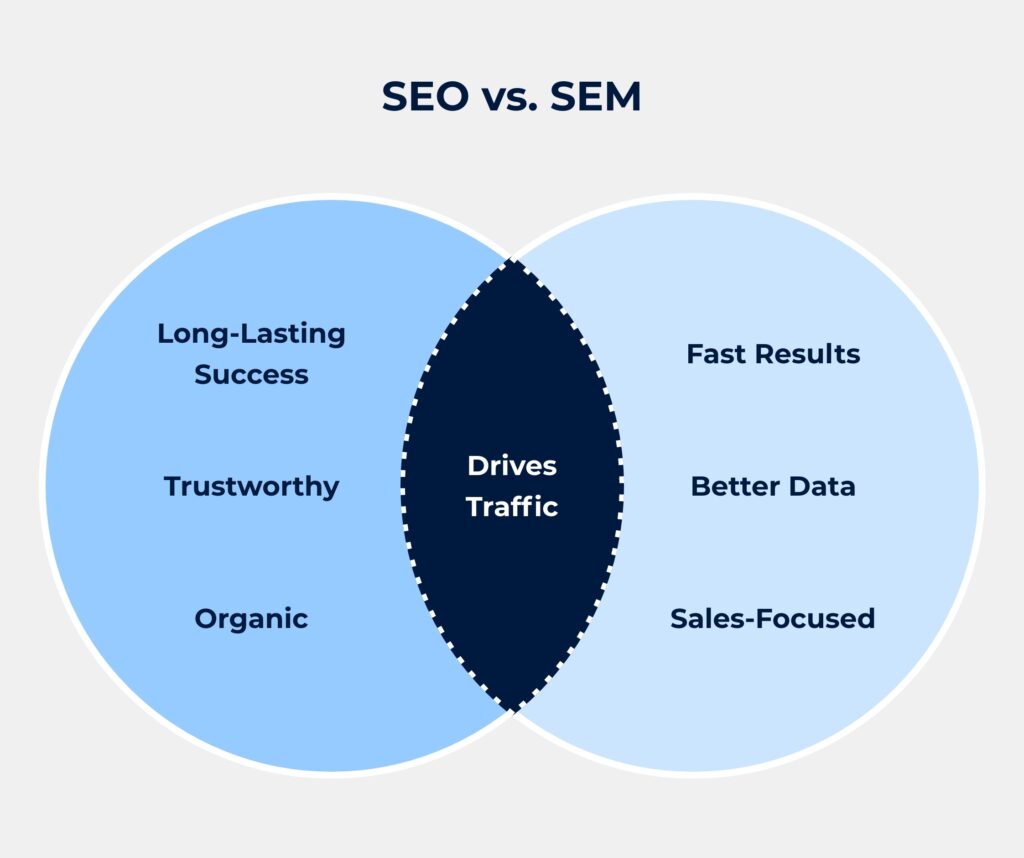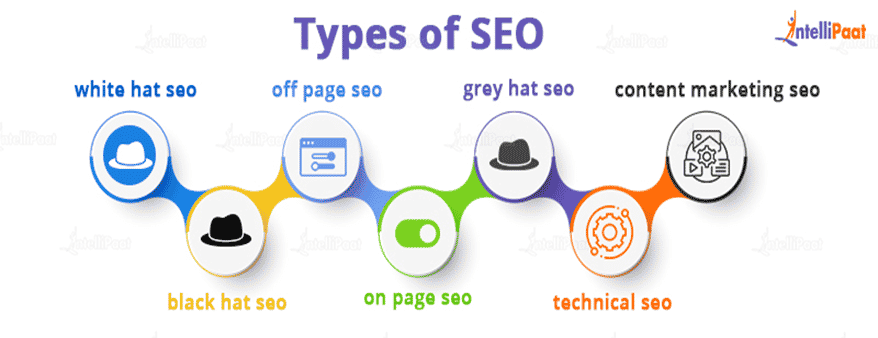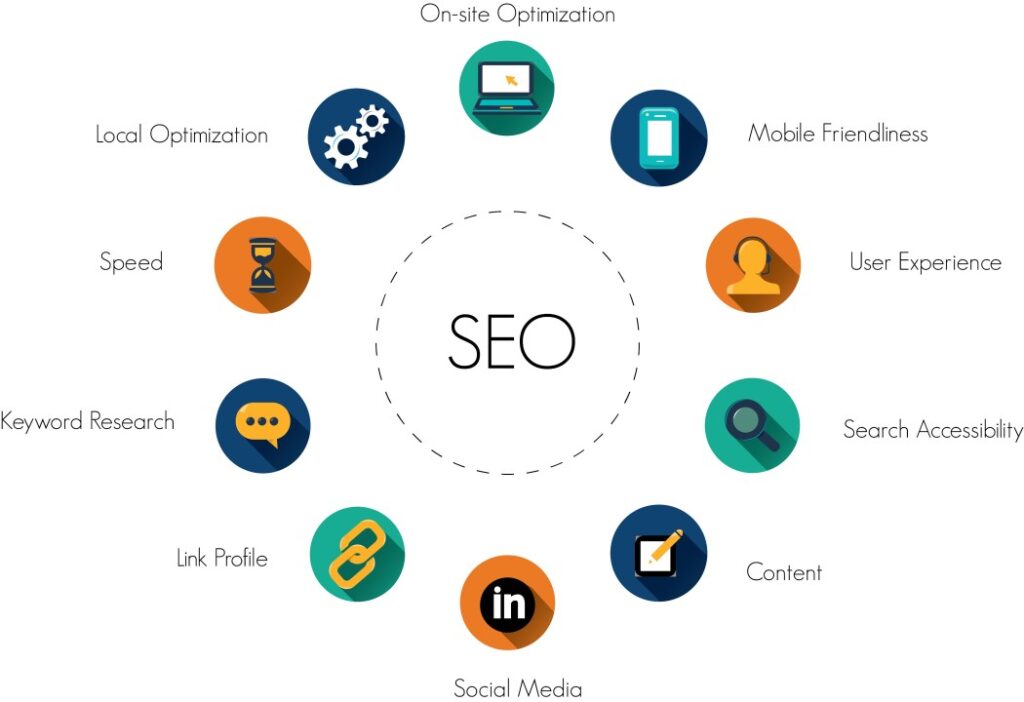How SEO works is crucial for any website that wants to increase their visibility and increase organic traffic. Although it may seem simple at first glance, SEO is a complex process and requires time and effort to understand properly.
SEO is still often equated with SEM. To differentiate between the two and understand SEO further, read this article to the end!
Getting to know SEO

SEO orSearch Engine Optimization is an optimization process for websites or web pages so they can be easily found by search engines like Google. The goal is to ensure that the website or the web page appears on the search engine’s search results page at a higher position.
To carry out SEO optimization, there are several things that need to be considered, such as ensuring quality content, using the right keywords, making sure websites or web pages are easily accessible to search engines, and building backlinks from other websites.
SEO optimization is very important for businesses or individuals who want to increase their visibility in the online world. This is because many people use search engines like Google to find the information or products they are looking for.
If you make sure a website or a web page is well optimized for search engines. You can expand your audience reach and increase your chances of selling products or services.
What is Customer Engagement? Meaning, Benefits, How to Measure and Tips to Improve It!
Difference between SEO and SEM

SEO and SEM are two terms that are often used in the world of digital marketing. Although both terms have the same goal, namely to increase the visibility of a website in search engines, there are several differences between SEO and SEM.
SEO or Search Engine Optimization is the process of optimizing a website so that it is easily found by search engines like Google through technical and content improvements. SEO involves improving the quality of a website and increasing the relevance of website content to keywords searched by users.
It’s different from SEM. SEM or Search Engine Marketing is a marketing strategy that utilizes search engines such as Google AdWords to display advertisements on search results pages. SEM pays search engines to display website advertisements in certain positions on search results pages.
So, the difference between SEO and SEM is that SEO focuses on optimizing websites so that they are easily found by search engines, while SEM focuses on marketing through advertising on search engines. These two terms can be used together to increase the visibility of a website and achieve the desired marketing goals.
Types of SEO

In the world of digital marketing, there are several types of SEO optimization that can be done to increase website visibility in search engines. Each of these types of optimization has different goals and methodologies, but they all aim to ensure that the website is well optimized and easy to find by search engine users. Here are the types of SEO you need to know
1. On-Page SEO
On-page SEO is a type of optimization carried out on the web page itself. This includes technical improvements and content optimization to ensure that the website is easy to find and relevant to search engines. On-page SEO involves several important elements such as title and description tags, URL structure, and content optimization with keywords.
2. Off-Page SEO
Off-page SEO is a type of optimization that is carried out outside the web page itself. It includes strategies that help improve a website’s reputation and authority in the eyes of search engines. Off-page SEO involves several important elements such as link building, social media optimization, and brand mentions.
3. Technical SEO
Technical SEO is a type of optimization that focuses on the technical aspects of a website, such as architecture, code, and performance. This ensures that search engines can access and understand the content of the website correctly. Technical SEO involves several important elements such as sitemap optimization, URL optimization, and page speed optimization.
4. Local SEO
Local SEO is a type of optimization that focuses on increasing a website’s visibility in search results that are relevant to the user’s geographic location. This helps local businesses and organizations target their local audience and ensures that they are easily found by users within close proximity. Local SEO involves several elements such as Google My Business optimization, local image optimization, and local backlink optimization.
5. E-Commerce SEO
E-Commerce SEO is a type of optimization that focuses on increasing the visibility of an e-commerce site in search results. This helps e-commerce sites reach their audience and ensures that they are easily found by users who are looking for the products or services they offer. E-Commerce SEO involves several important elements such as product content optimization, category optimization, and payment and shipping optimization.
6. Content SEO
Content SEO is a type of optimization that focuses on ensuring that the content published on a website meets the optimization standards set by search engines. Content SEO will help search engines identify and understand the topics discussed in the content and ensure that the content is relevant and of high quality.
Content optimization involves several important elements such as the use of target keywords, choosing a good title, and using effective meta descriptions. Content SEO is an important part of the overall SEO strategy and helps search engines determine whether the content published on a website is relevant and quality.
7. Voice Search SEO
Voice search SEO is a type of optimization that focuses on ensuring that websites and the content published on those sites are easy to find and access via voice search. Use Voice search SEO helps ensure that a website can be found by users using voice devices.
Voice search SEO involves several important elements such as content optimization for queries, location optimization, and mobile optimization. Example Voice search SEO like Amazon Echo or Google Home to search for information.
Understanding Marketing Mix You Need to Know
How Does SEO Work?

The presence of SEO helps websites to improve their rankings in search engine search results and ensures that websites can be found by users looking for relevant information. SEO involves several important elements such as keyword analysis, content optimization, technical optimization, and link building.
Keyword analysis is the process of identifying relevant keywords for a website and the content published on that site. This helps ensure that the website and content are easily found by search engines for relevant keywords.
Content optimization involves optimizing website content to ensure that it meets the standards set by search engines. This helps ensure that search engines determine that the content is relevant to the search submitted by the user.
Technical optimization involves optimizing the technical aspects of a website such as URL structure,kode HTML, and site speed. This helps ensure that the website meets the standards set by search engines and ensures that the website is easy to access and find by search engines.
Link building involves the process of creating links from other sites to website. This helps ensure that the website has strong and relevant links from other sites which helps improve the website’s ranking in search engine search results.
Website performance is very important for SEO because search engines use website performance as one of the factors to rank a website in search results.Cloud hosting from Lintasarta Cloudeka can help improve website performance by providing reliable technical infrastructure and flexible scalability for websites.

